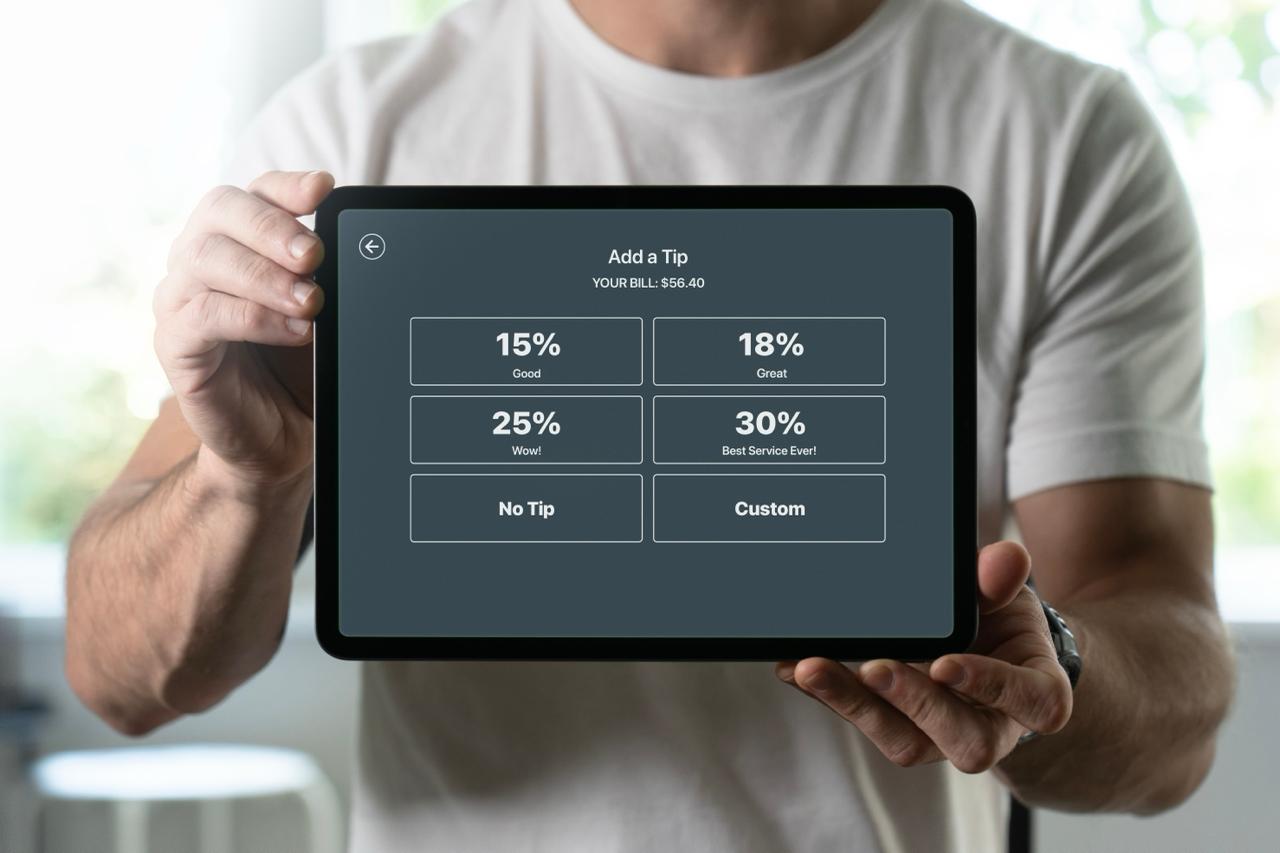
The Origins of Tipping: How We Got Here
A System That's Unfair from the Start
In the U.S., tipping isn’t just a reward for great service; it’s a requirement. Many service workers—especially in restaurants—are paid a shockingly low subminimum wage, sometimes as little as $2.13 an hour, assuming that tips make up the difference. This leaves workers in a constant state of financial vulnerability, a situation that should resonate with all of us, as it forces them to rely on the generosity of strangers to make a living.
The inequality ingrained in this system exacerbates this situation. You might earn great tips if you are lucky enough to work in a high-end, upscale establishment. However, many others working in more affordable places need more than tips to make ends meet. And let’s not ignore the fact that tipping practices are often influenced by bias. Research shows that women, people of color, and younger workers frequently get lower tips than their counterparts, regardless of the service they provide.


The Pressure on Consumers
For consumers, the pressure to tip is unrelenting. How much is enough? Should you tip 15%, 20%, or even more? This isn’t just at restaurants—there’s an expectation to tip for everything from rideshares and food delivery to spa treatments and hotel stays. The constant tipping decisions create an exhausting cycle for customers facing rising service prices, a burden many of us can relate to.
Many argue that this system needs to be more accurate, obscuring the true cost of services. Looking at a menu or service price list often seems reasonable until you add taxes, tips, and surcharges, making the final bill much higher than expected. In contrast, many countries without a tipping culture offer upfront, transparent pricing that includes service charges, so you know exactly what you’re paying from the Start.
Who Really Benefits?
The real winners in the tipping system are business owners. By not paying their employees a fair wage, they cut labor costs and shift customer responsibility. Meanwhile, workers face financial instability, with their income relying on factors beyond their control—like their customers’ mood, awareness, or wealth.
The idea that tipping incentivizes better service is also problematic. Workers, particularly women, often feel pressure to put up with inappropriate behavior or unreasonable demands to secure a decent tip. Additionally, there’s an unfair disparity between front-of-house staff, like servers, who receive tips, and back-of-house staff, like cooks and dishwashers, who don’t—even though both groups contribute to the customer’s experience.
Tipping in Luxury: A Question of Excess
In luxury settings, tipping takes on a whole different tone. Dining at a Michelin-starred restaurant, staying at a five-star resort, or experiencing bespoke spa treatments comes with an air of exclusivity, where tipping is almost expected to be excessive. In these environments, tipping becomes a performance—an opportunity to showcase wealth and reinforce status.
However, in the luxury sector, the expectation of generous tips can feel disingenuous. Should you be expected to pay extra for exceptional service when paying hundreds, if not thousands, of dollars for high-end experiences? Aren’t these services priced at a premium to account for quality and personalized attention? In luxury hotels and restaurants, where prices are inflated to reflect the exclusivity of the experience, tipping seems like an unnecessary and even excessive add-on, perpetuating a culture where service workers are still underpaid despite the high prices customers pay.
Moreover, there’s a certain discomfort when tipping in luxury spaces. For a guest spending significant money on a luxury experience, tipping often feels obligatory, not optional, and the pressure to go above and beyond can be uncomfortable. Many people in these settings feel compelled to tip generously, not just for the service they received, but to maintain a certain image or avoid awkward social situations.


The Growing Call for Change
There’s a growing conversation around tipping, and more people are questioning whether it’s a fair system. Some restaurants and service industries have tried to move to a no-tipping policy instead of paying their employees fair wages. While this shift may lead to increased menu prices, it also ensures that workers receive a consistent income, regardless of the customer’s mood or awareness. It’s yet to be widespread, but it’s gaining traction as customers become more aware of the issues tipping creates.
Several states and cities have also increased the minimum wage for tipped workers, but changes at the federal level still need to be made. The argument for eliminating tipping is clear: workers should not rely on unpredictable customer generosity to make a living. Policymakers must recognize this and take action. Shifting to a system where their employers fairly compensate service workers would create a more equitable environment for everyone.

Time for a New Approach

- TAGS ― Featured, Home-Influencer

Exploring the Rich History and Origin of Turkish Coffee
Coffee is special in cultures worldwide, with unique rituals and traditions.

The Timeless Elegance of Friendship:Why Every Woman Needs a BFF.
In the grand tapestry of life, there exists a delicate and precious thread that weaves joy into the mundane and transforms ordinary moments into extraordinary memories.

Elegance Unveiled: A Guide to Wearing Jewelry with Luxury and Sophistication
In style and sophistication, jewelry is a potent tool to enhance a woman’s elegance and personal flair. The transformative power of the right pieces cannot be understated.
instagram:
Error: No feed found.
Please go to the Instagram Feed settings page to create a feed.



I love reading your blogs and watching your video. I am really impressed by the way you are doing business and I am just inspired by it!
Great tips! I’ve just discovered your Youtube channel, and I love it! Thanks for sharing your content and the day and life of a designer.
Thanks so much for the tips both in the blog and on your YouTube channel. As a new Interior Design student, I find them to be incredibly helpful, interesting, and inspirational. Keep up the great work!
Comments are closed.